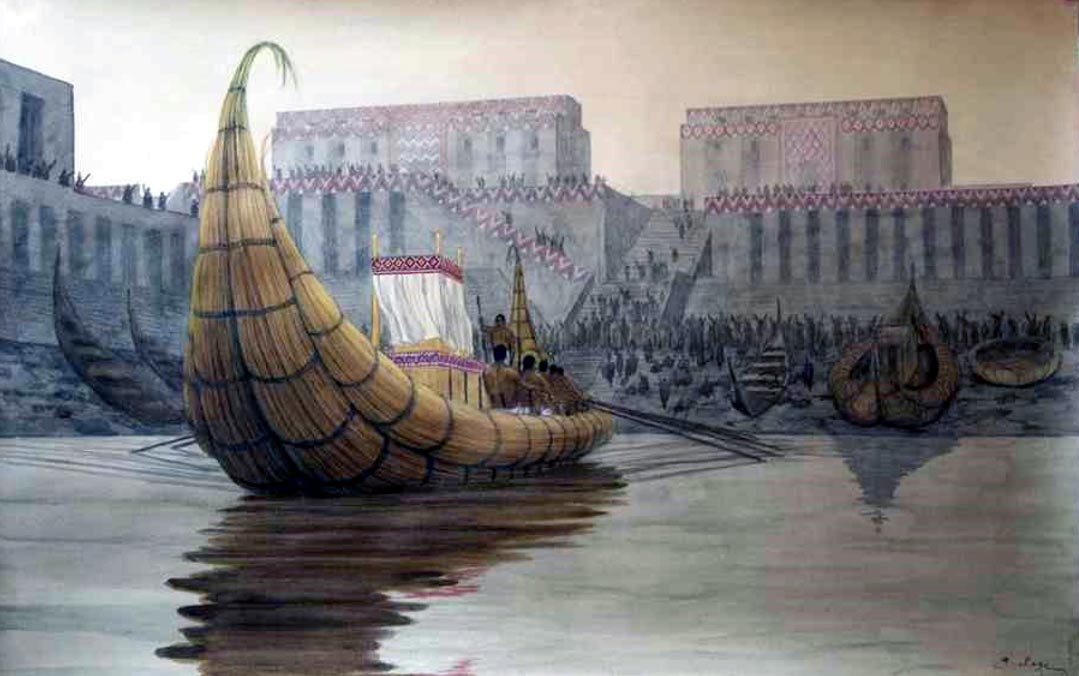The Royal Road of the King of the World is a mysterious concept in ancient mythology that denotes a 20-degree band around the Earth with 30 degrees north latitude as its central axis. While it doesn’t align with the equator, it represents a balance between the Earth’s landmasses. The significance of this band lies in its geographical and mythological importance, serving as the basis for a multitude of ancient legends about the so-called “Center of the Earth.”
The Geographical Balance
Though not the geographical center of the Earth, the Royal Road is considered the balance point between landmasses. When you calculate the land area south of 30 degrees’ north latitude (excluding the Arctic and Antarctica) and the land area north of it, they both come to approximately 26 million square miles. This symmetry made this band the focal point for ancient civilizations who believed it was the “Center of the Earth.”
The Legendary King of the World
Legends from various ancient cultures often speak of a King of the World who established his courts along this Royal Road. These stories depict a mythical figure who installed his throne at the beginning of a new era and set up a flourishing center of culture, often described as a “Garden of Eden.” This King of the World had different names in various cultures, including Sanat Kumara in India, Enki in Sumeria, Ptah-Osiris in Egypt, Masau’u among the Hopi, Melchizedek in Palestine, and Tawsi Melek among the Yezidis.
These myths also suggest that the King of the World traveled along this road, blessing the land and imparting sacred teachings to help humanity connect with the divine. Many ancient sites within this 20-degree band were considered sacred or associated with divine origins.
Ancient Sites Along the Royal Road
To understand the significance of the Royal Road, let’s explore some key ancient sites within this band:
Sedona, Arizona
Sedona is believed to be part of the territory once inhabited by the Hopi people, who referred to their land as Tuwanasavi, or the “Center of the Earth.” According to legend, Masau’u, the King of the World, established his court here at Palatkwapi, also known as the “City of the Star People.” Sedona was a “Garden of Eden” for both the Hopi and the Yavapai, who migrated to the surface after leaving their subterranean world.
Giza, Egypt
The ancient metropolis of Giza is another important site along the Royal Road. Egyptologist Carl Munck discovered that the ancients used Giza as the crossing point of the earliest Prime Meridian of longitude, measuring all their temples and pyramids from this point. In Egyptian mythology, Giza and Memphis were part of the court of Ptah-Osiris, the King of the World. These sites were also associated with the primal mound, which the Egyptians believed was the first solid land to emerge from the sea.
Jerusalem
Jerusalem is steeped in ancient lore and was once known as the city of King Melchizedek, the Middle Eastern manifestation of the King of the World. During the Middle Ages, maps often placed Jerusalem at the “Center of the Earth.” The Dome of the Rock, which currently encloses the Eben Shetiya, was once the Holy of Holies of Solomon’s Temple, believed to unite Heaven and Earth.
Mount Kailash, Tibet
Mount Kailash in Tibet is located on the opposite side of the globe from Sedona. It is the physical counterpart of the legendary Mount Meru, a significant site in Hindu mythology. This region is said to be the Garden of Eden for several Asian peoples, including the Persians, Scythians, and early Tibetans. According to the Bon Shamans of Tibet, this region was their ancient Garden of Eden, Olmolungring. Meanwhile, some Tibetan Buddhists identify it as Shambhala, the imperial city and throne of the King of the World.
The Enduring Legacy
The Royal Road of the King of the World continues to captivate the imagination, offering a glimpse into the beliefs and mythologies of ancient civilizations. The sites along this band serve as a reminder of humanity’s quest to find a spiritual center, a place where the sacred and the mundane meet. While the Royal Road may not be a geographical concept, it symbolizes a metaphysical journey toward understanding our place in the world and our connection to the divine.
Post Links:
Remarkable Discovery in Brazil: 9,000-Year-Old Skeletons and a Trove of Artifacts
The Mystery of Lovelock Cave’s Red-Haired Giants
RajExplorer

